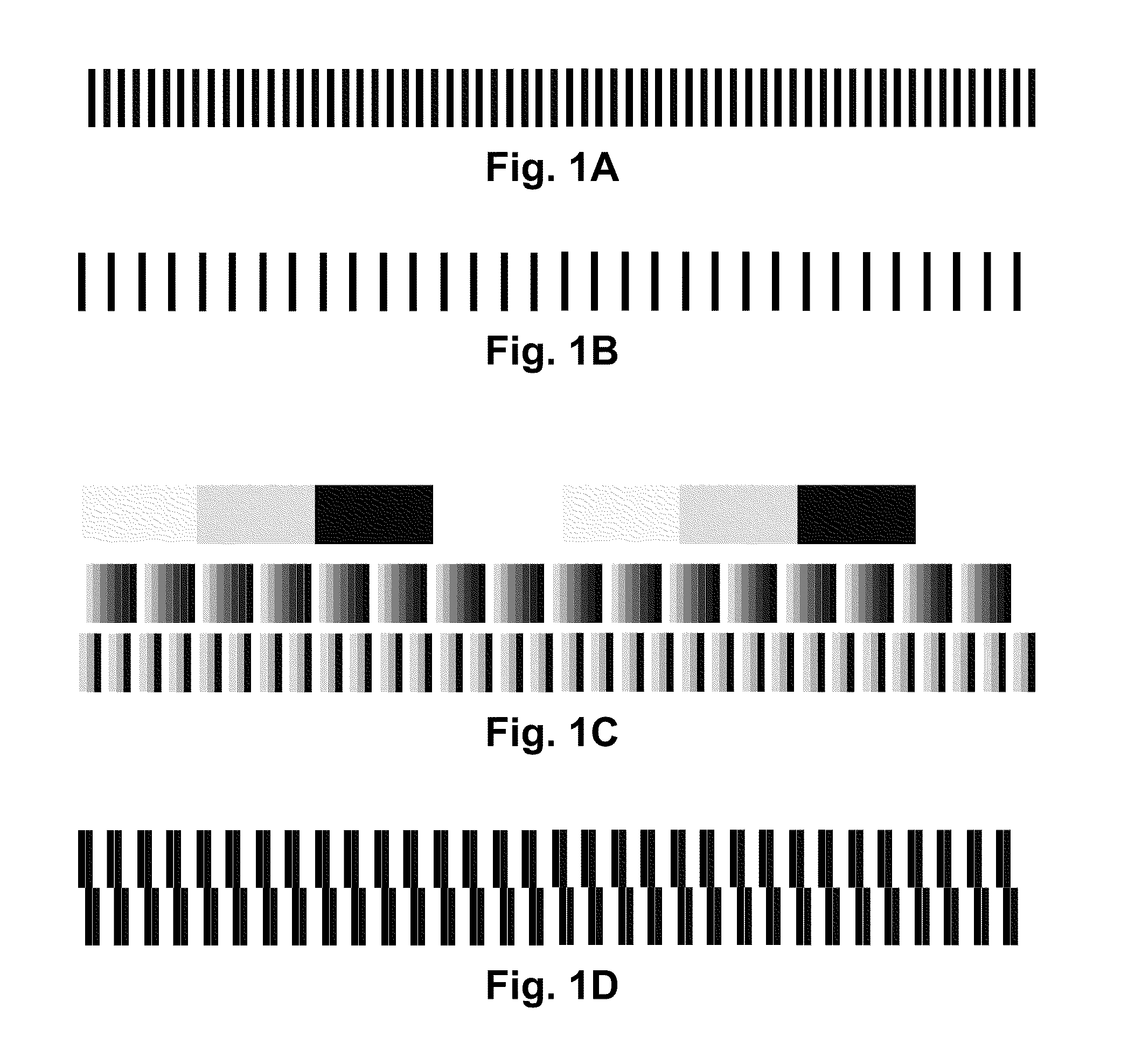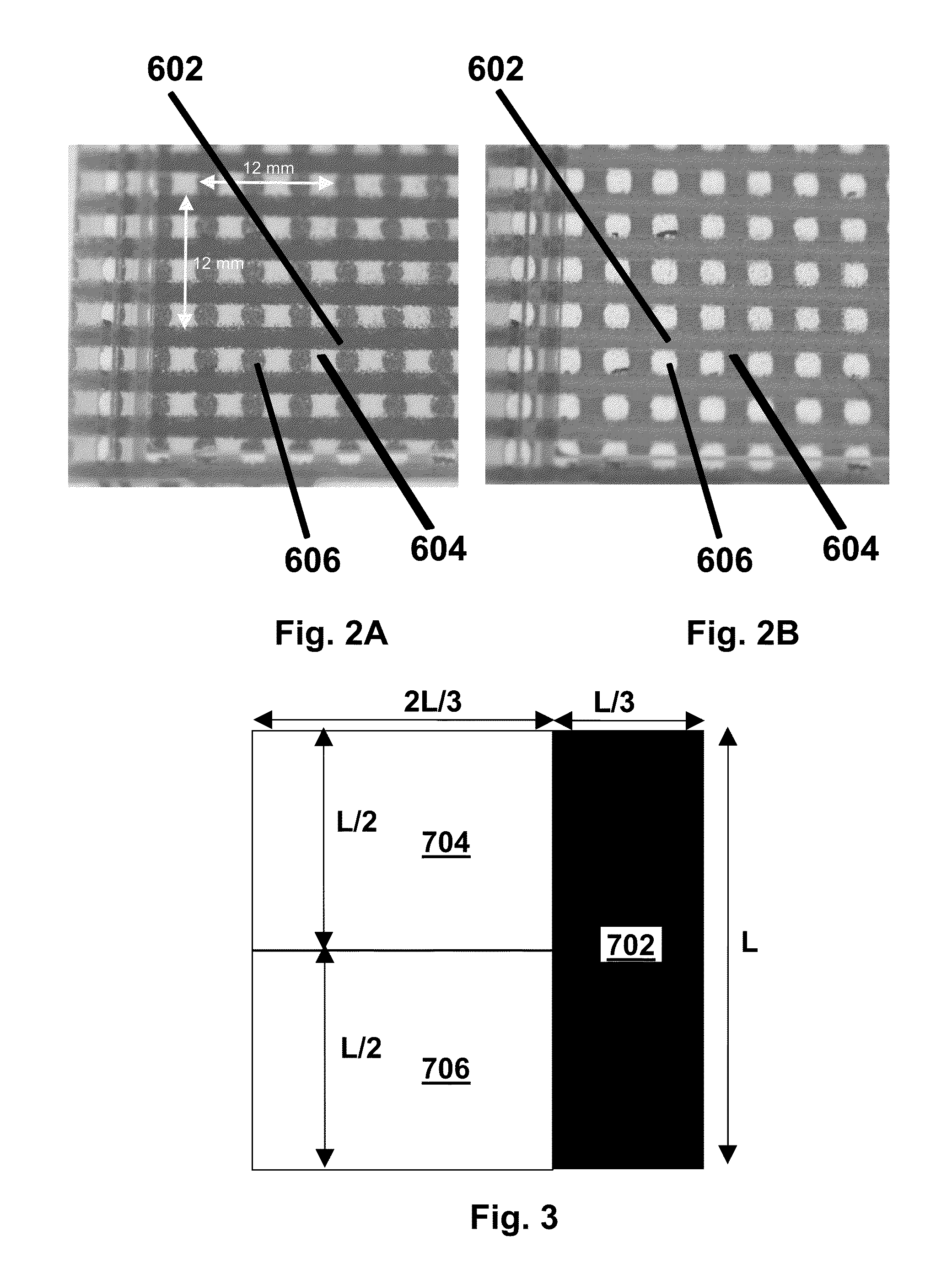Nevertheless, problems with the long-term
image quality of these displays have prevented their widespread usage.
For example, particles that make up electrophoretic displays tend to settle, resulting in inadequate service-life for these displays.
Such gas-based electrophoretic media appear to be susceptible to the same types of problems due to particle
settling as liquid-based electrophoretic media, when the media are used in an orientation which permits such
settling, for example in a sign where the medium is disposed in a
vertical plane.
Indeed, particle
settling appears to be a more serious problem in gas-based electrophoretic media than in liquid-based ones, since the lower
viscosity of gaseous suspending fluids as compared with liquid ones allows more rapid settling of the electrophoretic particles.
However, as already mentioned these prior art techniques are not satisfactory for forming, on arbitrary three-dimensional shapes, electrophoretic medium coatings with a sufficiently uniform thickness to give optimum optical performance.
Other problems encountered with slot
coating techniques include:(a) chatter-like streaks parallel to the coating head (for example, due to vibrations in the coating apparatus); these streaks are believed to result from periodic bunching or jamming of capsules;(b) streaking in the direction of coating (i.e., perpendicular to the slot of the coating head), believed to be due to
capsule jamming or non-uniform flows in delivery of capsules to the coating head;(c) less than desirable
capsule contact (or
wetting) with the optical face due to inadequate settling or deformability of the small capsules (of the order of 20-200 μm) typically used in encapsulated electrophoretic displays; and(d) non-uniformities in coating thickness due to formation of multiple
layers of capsules (see the aforementioned U.S. Pat. No. 6,839,158 for a discussion of the advantages of forming only a single layer of capsules on a substrate).
The presence of these types of defects can adversely affect the appearance and optical performance of the display.
Also, as is well known to those skilled in slot coating technology, slot coating imposes limitations upon the
viscosity and other physical properties of the material being coated, and typically requires the addition of slot coating additives to control the
rheology of the coated material to ensure that the coating does not flow and develop non-uniformities in thickness prior to
drying.
Although the binder serves several useful functions, including ensuring adequate adhesion of the capsule film to the substrate on which it is coated, excessive amounts of binder can hinder capsule contact with the
electrode which is normally present on the substrate, and may also hinder the desirable flattening of the faces of the capsules in contact with the
conductive coating (see, for example, the aforementioned U.S. Pat. No. 6,067,185).
Because the binder typically has a substantial effect on the
viscosity and other physical properties of the capsule / binder mixture, at least in some cases it may be difficult to reduce the amount of binder used and still maintain these physical properties at values compatible with slot coating.
However, while conventional printing techniques might be used to prepare large displays of this type having resolutions of (say) less than 10
lines per inch (approximately 0.4 lines per mm), producing
high resolution displays of this type with resolutions of about 100
lines per inch (approximately 4 lines per mm) with such conventional techniques is very difficult.
Again, while spray or ink jet coating might be used to apply the patterned coatings of capsules, producing
monolayer capsule coatings using these methods will be difficult or impossible.
Switching between two colors (red plus blue, for example) is not possible in this type of display.
If the same
backplane is used for an RGBW color display with the red, green, blue and white sub-pixels of each color pixel arranged in a 2×2 matrix, the resolution of the color display drops to 88 dpi (about 3.4 dots per mm), which is objectionable to many users who find the individual pixels readily visible.
As discussed in more detail below, in practice the sub-pixel edges are subject to certain
edge effects which compromise the color rendering of the display by causing desaturation and darkening of the primary colors.
Such
edge effects can cause serious adverse effects upon the color rendering properties of the display.
 Login to View More
Login to View More 


